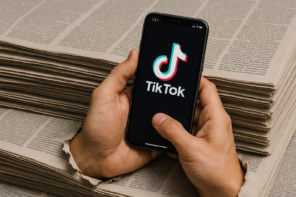
Monday April 23, 2018
Micro Influencers: Setting New Standards For The Future
Micro influencers are categorised as social media influencers or bloggers with a significantly lower amount of followers than some of the biggest names in the business. Digital influencers and their followers have been identified as consumers with notable buying power. Increasingly, young consumers who engage in social media will openly admit how they have been influenced into purchasing a product, as it was recommended by a popular blogger.
Instagirls Reshaping Fashion
PR practitioners and marketers now rely on these influencers for publicity and traction. Similarly, statistics show that large corporations still invest significantly in influencer promotion. Some of the most notable fashion and lifestyle Instagrammers names in the business include Aimee Song (4.7million followers), from Song of Style, Kristina Bazan (2.3million followers) from Kayture and Chiara Ferragani (12.5million followers) from The Blonde Salad.
For many years, the number of followers dictated how lucrative a contract was, the more followers the greater the commercial partnerships. For instance, many fashion models are often asked about their social media presence, activity and followers before being signed up. It had become an expected qualification a pillar of the job, offering huge career jumps. Gigi Hadid (39.3million followers), Kendall Jenner (89.5million followers), Gaia Gerber (3.2million followers) and Sofia Richie (3.4million followers) have all received lucrative contracts for their social media fame. Chiara Ferragani has recently announced her collaboration with French beauty giant Lancôme.
What Is Changing?
Despite the massive follower numbers of certain social media influencers, in recent years, many brands have moved away from them It seems ludicrous to think these hard hitters are losing their mass-market appeal, but there seems to be a sea of change happening, Micro influencers, who have around 10-50k followers, have increasingly become more important for marketers due to the demographics of their followers.
No longer is a beautiful face and a 6-digit follower base always enough to win you lucrative partnerships. “Who’s reading it? Most of the girls’ audiences were 60 percent men. Unless they’re going to be promoting beer, it doesn’t work.” According to Rhiyen Sharp, the new director of digital strategy at The Industry Model Mgmt. Therefore such influencers do not necessarily have the target demographics partnerships marketers are searching for fit the target audience of brands.
What Can We Learn
Agencies focusing specifically on micro influencers has increased rapidly in the past year. The shift is changing and marketers are becoming more assertive of the demographics of these influencers. They are becoming savvier of where to invest their cash for maximum exposure to target audiences. It is truly about the quality of their influencers followers rather than the quantity of followers overall. As many large digital influencers have become advertisement platforms themselves, many young consumers step away and search for newcomers with fresh approaches. When a digital influencer has become too famous or commercial, it has occasionally backfired on them.
Share your thoughts with us on influencer marketing? Use the hashtag #ThePRInsider
Curzon PR is a London-based PR firm working with clients globally. If you have any questions, please feel free to contact our Business Development Team bd@curzonpr.com







Follow us